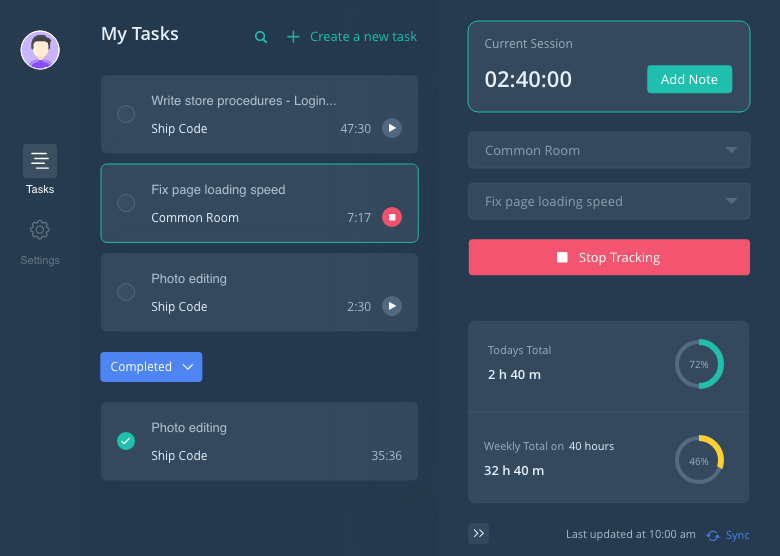Workload management - How to master it?
No Credit Card Required.

Is it difficult for you to delegate tasks to your team? You're not the only one who feels this way. As a leader, you have a significant obligation to keep your team engaged, productive, and on target.
Balancing your team's workload is no simple feat, and it's even tougher now that everyone is working from home. But don't worry; we're here to help you manage it properly.
Problems arise when teams do not operate well together. Workload management is an important soft skill for team performance.
In today's always-on environment, customers and businesses have high expectations for service. Workload management is a crucial component of providing high-quality service. Project and team leaders, as well as employees, can benefit from workload management approaches.
Let's take a look at the information below to learn more about workload management and its strategy and technique.
What is workload management?
The technique of successfully distributing and managing work across your team is known as workload management.
Workload management, when done right, enhances employee performance and decreases conflict, leaving you and your team satisfied rather than overwhelmed at the end of the day.
The purpose of workload management is to ensure that work is delivered on time but also to maintain a healthy balance in terms of the amount of work that each team member is responsible for.
Workload management will look different depending on your industry. For example, any company that needs to dispatch workers would require field service management. Field service management software like Service Fusion can be used to complement their operations.
What happens if employees are unable to handle their workload?
When technology is forced to excessive demands without respite, it will eventually fail; the same is true for individuals.
When a worker is faced with increased demands and little control, exhaustion in numerous forms, i.e., physical, psychological, and emotional, and increased stress and strain, can ensue. This harms productivity.
Excessive workload eventually becomes one of the leading causes of employee dissatisfaction with their employment and companies.
Why is Workload Management important?
Individuals are often delighted to work hard since something incredibly satisfying and fulfilling about a "good day's work." Workload management is vital because there is a unique relationship between job demands, intellectual demands, and job happiness.
Job expectations are too high, job satisfaction suffers, yet when intellectual demands, or decision-making latitude, rise, job contentment rises.
Staff employees who are also good decision-makers will thrive even in high-demand situations. When provided with high decision-making latitude, positive coping behaviors can be acquired and experienced.
According to recent data, 80 percent of skilled global employees feel stressed and on the verge of exhaustion. In addition, four out of five employees (82%) believe they are less engaged at work when they are pressured.
Workload management allows you to allocate work more effectively throughout your team, reducing employee stress and preventing them from feeling overworked.
Eventually, everyone could benefit from creating a sound task management plan.
It will keep the teams on track and guarantee that the work is completed quickly as possible. There are various reasons to consider to ensure that your workload management plan is completely created.
The Workload Management Strategy
Set these five strategies into action to effectively manage your team's workload.
1. Determine the workload and capacity of your team:
It's difficult to know how much total work your team needs to do when they are dispersed across several project briefs, plans, and tools, and they're working from home.
Knowing the information is essential for determining how much each team member is doing and what they can handle. By having your plans in order, you can get beyond this and figure out what your team's true workload is:
- Make a comprehensive outline of the projects and procedures your team is in charge of.
- Determine the scope of each project and when you will complete it.
- Projects should be divided into smaller tasks.
- Should prioritize work according to its importance and urgency.
2. Allocate the resources and divide responsibilities into individual tasks:
Allocation of resources can help you recognize and allocate available resources to a project. To keep everyone's tasks balanced and manageable, use these five tips:
- Assign the most important tasks first.
- Balance the start and end dates.
- Make sure the correct employees are assigned to every task or project.
- Involve your team in the discussion.
- Always express why you're trusting them with a certain assignment.
3. Monitor your teammates and make any necessary adjustments to workloads:
To track how each staff is handling their present workloads, schedule a one-on-one check-in with them regularly.
If those check-ins reveal that a team member is overburdened with tasks, see who else would be willing to help out and also ready to make real-time adjustments to avoid missing deadlines.
Create learning opportunities to assist them in becoming more efficient and organized.
Many workers work from home these days, and it's crucial to keep track of working hours, so you know what they're up to.
4. When workloads are heavy, increase team efficiency:
Encourage your staff to establish their technique for managing their workload while focusing on the broader picture. Whenever there's a bunch of work, they must get the job done correctly and efficiently.
Here are a few better ways to manage a heavy workload :
- Make a to-do list.
- Decide on your top priorities.
- Recognize your limitations.
- Take a break.
- Work together and interact with your colleagues.
- Fixate on just one task at a time instead of many tasks.
5. Embrace a project management tool:
When you use a work management application, every team member can understand how their work contributes to the greater team and corporate goals.
Because communication occurs within activities, finding the information you require takes only two seconds rather than two minutes. Because projects may be viewed individually or collectively, timelines keep everyone on track.
Enhancing Workload Management Skills
Below few things are mentioned to remember when it comes to workload management, including:
- Creating a work culture that emphasizes the quality of work completed rather than the quantity.
- Equitable workload distribution. Consider the various levels of responsibility that are associated with various positions.
- Allowing for flexibility in work prioritizing and timelines, as needed.
- Assuring that the required equipment and resources are available to assist in the timely completion of tasks.
- Developing, communicating, and implementing solutions for dealing with demand spikes promptly.
- Recognizing and recognizing workers' efforts when there is a great demand for their services.
Why is it important to communicate about the workload?
Regularly communicating with employees about how they can best manage and adjust their workload, preparing employees for expected periods of increased workload, and actively involving employees in developing workload management strategies will eventually reduce or eliminate redundant or unnecessary tasks.
Tips to help your employees with workload management
Below we have mentioned a few tips to help your employees with workload management:
1. Encourage employees to avoid multitasking
Many organizations have promoted multitasking for years, although numerous studies have shown that dividing your attention between various tasks reduces efficiency and negatively impacts work quality.
2. Start doing daily standups
The simplest method to promote transparency is to get the entire staff together for at least 10 minutes every day. And anyway, good communication and daily standups are excellent ways to keep everyone on the same page throughout the project.
You can readily see whether any dependencies prevent team members from doing their best work with daily standups.
3. Adaptability and flexibility:
Flexibility and adaptability are two words that come to mind while thinking about flexibility and adaptation.
Flexible and adaptable management allows employees to participate in the work process and perform tasks in the most efficient manner possible for them and their abilities. You can also take advantage of different types of work schedules to improve flexibility and workload management.
4. Encourage to Use Time Tracking

This web-based time management and analytics system may be used by employees who seek to increase their productivity and efficiency. It stops you from getting distracted and dispersed.
Making time tracking enjoyable for your employees is the key to success (or as pleasant as it can get). People may be rewarded for documenting their hours accurately and on time if their employers provide incentives.
Here we have an exciting name to introduce to you: “Apploye Time Tracker”. Apploye is one of the best time tracking software compared to its alternatives.
Top features of Apploye:
- Accurate Time Tracking
- Employees may use a Pomodoro timer to break up the boredom.
- During working hours, overall monitoring activities include report production, activity tracking, employee screenshot monitoring, and URL tracking.
- Working hours are calculated meticulously and many more.
5. Effective Communication:
Leader-to-worker communication is critical for ensuring that assignments and deadlines are fully understood. This involves letting employees know that they may come to leaders with any questions or issues regarding the projects they're working on.
In business, keeping effective communication is critical. For example, in a call center, keeping call records is critical to know about the calls.
Using a personal phone number is not a good idea; instead, use a virtual cloud phone system to keep effective communication between you, your team, and your customers.
6. Online Planning and organizing:
Individuals within the organization can use online Planning to organize meetings, view each other's calendars, and send vital warnings.
Using online management and collaboration tools for planning can also help you in knowing more about your employees' work and growth.
When done correctly, workload management improves employee performance and reduces turmoil, leaving you and your team satisfied rather than overwhelmed at the end of each day.
Conclusion
Individuals frequently believe they must be exceptionally productive and effective at work, leading to multitasking, taking on too many projects, and working long hours. This not only raises employee stress levels but can also contribute to burnout.
It's critical for businesses and their executives to set realistic goals and support their employees in managing their workloads. In the long term, a happy and healthy workforce is a more productive one.
So, do you think you've got what it takes to improve your time and workload management skills?
The suggestions we've provided above will undoubtedly assist you in effectively managing your workload.